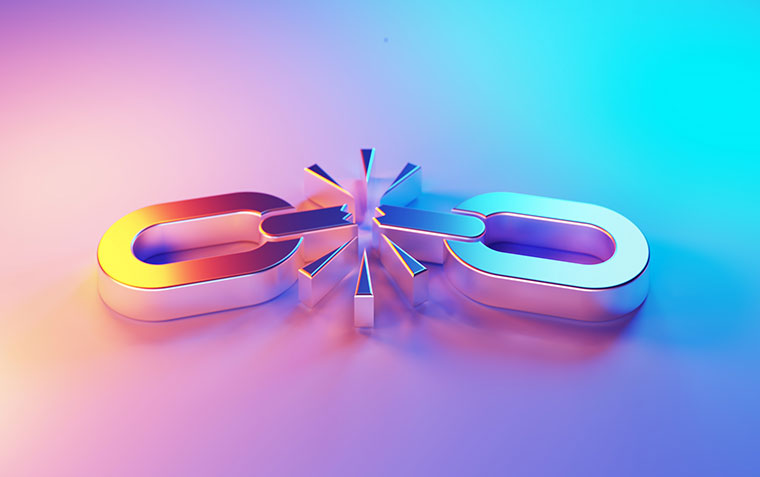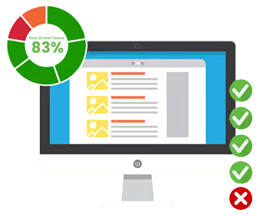The SEO Impact of Broken Links Explained

Websites are made up of many links—both internal links to other pages on the site, and external links to other websites or social media. As a website ages, these links can break when the URLs they point to are changed or removed. This can be frustrating for users trying to find content, and it can also negatively impact a website’s Search Engine Optimisation (SEO).
What are Broken Links and How Do They Happen?
Broken links are hyperlinks that point to a webpage or resource that no longer exists. This is often referred to as 'link rot' and such links are also called 'dead' or 'dangling links'. Most people are familiar with landing on a '404 Page Not Found' error page, this is usually the result of a broken link.
How they occur
The two most common causes of broken links are:
- Editing or deleting a page’s URL
- External content (such as another website’s page) being deleted
This happens more frequently on large websites with many links, eCommerce sites where products are constantly updated, and blog posts that contain hard-coded links.
What Sites are Most At-Risk of Broken Links?
Larger sites with sprawling content are the most at risk and the hardest to manage. These include:
- eCommerce sites with products and categories
- Membership systems, particularly those with member directories
- Sites with blogs
- Websites older than three years
How Broken Links Affect SEO
Broken links affect SEO in the following ways:
Crawlability issues – If search engines encounter too many dead-end links, they can’t crawl as many valid pages.
Indexing problems – Pages that can only be accessed through broken links may not be indexed.
Loss of link equity – When other sites link to yours, you gain SEO value. If those links break, you lose that equity.
Impact on site authority and trust – Search engines, like Google, see broken links as a sign of poor maintenance. Sites viewed as poorly maintained lose authority and trust.
Negative user experience signals – High bounce rates and short dwell times signal to search engines that users aren’t finding value, which can lower rankings.
User Experience and Its Indirect SEO Effects
If users frequently run into broken links and 404 errors, they’re more likely to leave the site, raising your bounce rate. Search engines use signals like bounce rate and dwell time to assess how user-friendly a site is.
- Sites with low bounce rates and longer dwell times tend to rank better.
- Sites with high bounce rates and shorter dwell times often signal frustration and are ranked lower.
Poor user experience also harms customer trust. Visitors may be less likely to recommend or share your website, which reduces referral traffic and potential conversions.
How to Identify Broken Links
You can identify broken links by either manually checking your site or using automated tools.
Manual Check
This involves checking every page on the site and opening each link to ensure it still works. The advantage is accuracy, but for large sites it is very time-consuming and easy to miss some links.
Automated Link Checkers
A faster method is to use tools that crawl your site and report errors. These tools highlight broken links, inaccessible pages, and embedded code issues. While they won’t confirm if the linked content is still relevant, they provide a comprehensive map of your website.
Automated link checkers are widely available online. Alternatively, you can ask your web developer to perform a full link audit and create a plan for ongoing maintenance.
Best Practices for Fixing and Preventing Broken Links
Regular audits and maintenance – Schedule audits based on how often you update content.
301 redirects for removed pages – Set redirects from old URLs to new ones to preserve traffic and SEO value.
Updating or replace external links – Regularly check that external content you link to is still valid.
Create a custom 404 page – A user-friendly 404 page with a search bar and top-level links can help visitors find what they need.
Use a central link manager – This system automatically inserts pre-determined links when certain words or phrases appear, making link maintenance easier. (We offer this for blog posts so you can focus on content, not link management.)
Benefits of Fixing Broken Links
Fixing broken links provides several SEO and user experience benefits:
- Improved crawl efficiency and more complete Search Engine Indexing
- Better user engagement and lower bounce rates
- Stronger site authority and improved search rankings
*****
Large and complex sites are the most at risk of broken links, but broken links can negatively affect any site’s SEO. Because they have both direct and indirect SEO consequences, managing and fixing broken links should be a key part of your ongoing SEO strategy.
Your web developer or SEO partner should understand broken link management and follow best practices to keep your site healthy.
If you’d like to arrange an audit or ongoing management of broken links for your website, call us on 03 8873 0000 or contact us through our email form.




